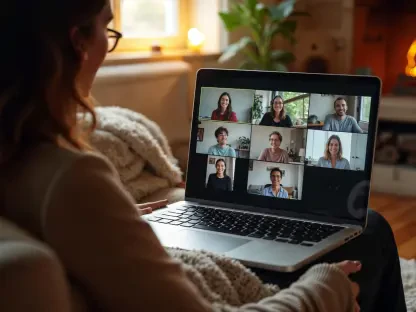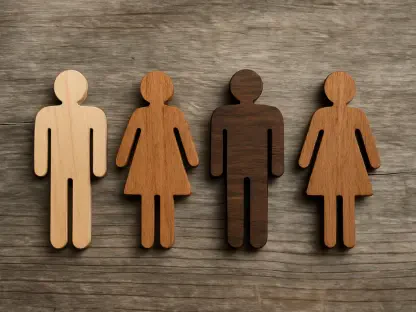The workplace landscape is ever-evolving, and the latest trend gaining traction is the significant increase in sick days taken by Gen Z employees. This shift not only reflects changing attitudes towards work-life balance and health but also signals broader cultural transformations within the American workforce. Emily Stewart’s article “Generation Call-In-Sick” provides an in-depth exploration of this phenomenon, examining various factors contributing to the rise in sick leave among younger workers. Leveraging insights from human resources experts, workplace trend analysts, and organizational psychologists, the article paints a comprehensive picture of the motivations and implications behind this trend.
Generational Shift in Attitudes Toward Work-Life Balance
In recent years, there has been a noticeable shift in how different generations approach work-life balance. Gen Z and millennials place a higher emphasis on self-care and personal well-being compared to older generations. Liz Wilke, a principal economist at Gusto, highlights that balancing work life and self-care is a priority for these younger workers, unlike their older counterparts who might not prioritize it to the same extent. The emphasis on self-care and mental health is a crucial driver behind the increased use of sick days. Younger employees are more likely to take time off not just for physical illnesses but also for mental health reasons. This growing acceptance of mental health days signifies a cultural change where personal well-being is valued and no longer equated with personal sacrifice or professional dedication.
Furthermore, data from Dayforce, a human-resources platform, reports a 55% rise in sick leave in 2023 compared to 2019 among its U.S. client companies. Another HR platform, Gusto, corroborates these findings, noting a 42% increase in sick leave among 300,000 small and midsize businesses using its services over the same period. This statistical backing highlights the widespread nature of this trend. The generational shift is not limited to attitudes but is also evident in actions, with more young workers actively taking the steps needed to maintain their health and well-being, even if it means taking more sick days.
The Pandemic’s Role in Heightening Health Consciousness
The impact of the COVID-19 pandemic on workplace dynamics cannot be overstated. The widespread health crisis caused by the virus has made employees more cautious about their health. Many now feel a greater responsibility to stay home when unwell, both to protect themselves and their colleagues. Kenneth Matos, director of market insights at HiBob, suggests that the pandemic has heightened health consciousness and made people keenly aware of potential health threats. This increased awareness has encouraged more workers to take necessary sick days, contributing to the observed rise.
Moreover, the pandemic has exacerbated stress and anxiety levels, leading to a surge in mental health issues among employees. Reports from organizations like ComPsych show a staggering 300% increase in mental health-related leaves from 2017 to 2023, further underscoring the pandemic’s role in amplifying the importance of mental well-being. The pandemic’s long-term effects have fundamentally changed how employees view their health, making them prioritize it more than ever before. This shift in mindset is particularly pronounced among younger generations, who are leading the charge in taking more sick days to care for their mental and physical health.
Changing Dynamics of Employee-Employer Loyalty
Another significant factor driving the increase in sick days among Gen Z employees is the evolving dynamic of employee-employer loyalty. Having witnessed numerous layoffs and job insecurities during the pandemic, younger workers are less willing to exhaust themselves for their employers. There is a diminished faith in the notion that personal sacrifice will yield professional rewards. Matos notes that this change in mindset has led to a reduced willingness among Gen Z employees to endure stress without taking necessary time off. This generational shift implies that younger workers prioritize their well-being over perceived loyalty to their employers, which, in turn, manifests in higher sick leave statistics.
With the changing dynamics of employee-employer loyalty, younger workers are also reevaluating their career choices and job sustainability. They are less inclined to stick with an employer that does not value their well-being, further reinforcing the trend of taking more sick days. Gen Z employees are increasingly viewing their jobs as just one aspect of their lives, rather than the central focus. This comprehensive view of work and personal life integration allows them to step away from roles that are detrimental to their health without the fear of long-term career repercussions.
Remote Work and Its Influence
The rise of remote work has also played a role in the increasing number of sick days taken by employees, particularly among Gen Z. Flexible work environments seem to facilitate a culture where taking sick leave is more acceptable. Brittany Schmaling, a principal data analyst at Dayforce, hypothesizes that permissive company cultures that embrace remote work contribute to this trend. These flexible environments allow employees to feel more comfortable taking necessary time off, leading to a higher incidence of sick days among remote workers. Interestingly, remote workers are reportedly taking more sick days than their in-person counterparts, suggesting that the ability to work from home does not necessarily equate to working through illness.
The increased prevalence of remote work also blends the lines between personal and professional life, making it easier for employees to take time for self-care without the physical presence in an office. This shift has encouraged a more balanced approach to work, with employees feeling less pressured to show up when they are unwell. The rise of tools and platforms that facilitate remote work has further supported this trend, allowing employees to stay productive even while managing their health better. However, this dynamic also poses challenges in terms of maintaining team cohesion and ensuring productivity without compromising well-being.
Disparities in Sick Leave Benefits
One challenge highlighted in the article is the disparity between white-collar and blue-collar workers when it comes to sick leave. While remote and white-collar employees often enjoy paid sick leave and flexible schedules, in-person workers, such as those in retail positions, frequently lack these benefits. This divide underscores the importance of adopting a more equitable approach to employee health and wellness. The varying access to sick leave and the financial implications for different types of workers add complexity to the discussion. Companies need to address these disparities to ensure all employees can take necessary sick days without fearing loss of income or job security.
The inequity in sick leave benefits also points to a larger systemic issue within the workforce. White-collar workers have the advantage of better health benefits and more accommodating work environments, while blue-collar workers often face harsher realities. This disparity not only affects individual employees but also influences overall workplace morale and productivity. An equitable approach to sick leave benefits can help bridge this gap, making it possible for all employees to prioritize their health without the added stress of financial instability or job insecurity. Addressing this issue is crucial for fostering a fair and supportive work environment across all sectors.
The Decline of Presenteeism
The article also touches upon the decline in presenteeism, the practice of working while sick. Traditionally seen as a demonstration of dedication, presenteeism is increasingly recognized as detrimental to both employees and businesses. Ensuring that employees take necessary sick days for proper rest and recovery leads to improved performance and overall well-being. Malissa Clark, an associate professor at the University of Georgia, emphasizes that allowing employees to focus on recovery rather than working while unwell benefits organizations in the long run. Proper rest and recovery ensure sustained high performance levels, ultimately enhancing productivity and reducing the risk of burnout.
The decline of presenteeism reflects a broader shift in how work and health are prioritized. More organizations are recognizing the long-term benefits of encouraging employees to take time off when needed, rather than pushing through illness. This change is leading to a healthier workforce that is more resilient and better equipped to handle the demands of their roles. The move away from presenteeism also fosters a supportive work environment where employees feel valued and understood. As this trend continues, it is likely that more companies will adopt policies that promote well-being over relentless dedication, benefiting both employees and the organization as a whole.
Perception and Career Prospects
The workplace is continuously evolving, and a new trend has emerged: Gen Z employees are taking more sick days than previous generations. This change goes beyond just the number of days off—it reflects a shift in how younger workers view work-life balance and personal health. It also indicates wider cultural changes within the American workforce. Emily Stewart’s article, “Generation Call-In-Sick,” delves deeply into this trend, uncovering the various factors that drive the rise in sick leave among Gen Z. Stewart draws on insights from human resources experts, workplace trend analysts, and organizational psychologists to offer a thorough examination of this phenomenon. The article reveals that Gen Z values their mental and physical well-being more than previous generations, and they are not hesitant to take time off to recover from illness or stress. Additionally, the broader acceptance of remote work and flexible schedules has made it easier for these employees to prioritize their health without risking their jobs. This trend raises important questions about the future of work culture in America and how employers must adapt to meet the evolving needs of the workforce.









